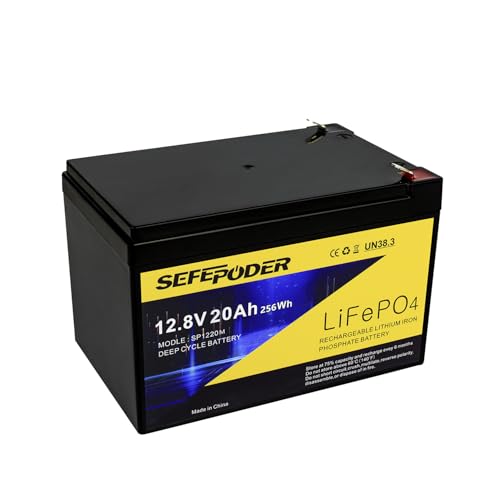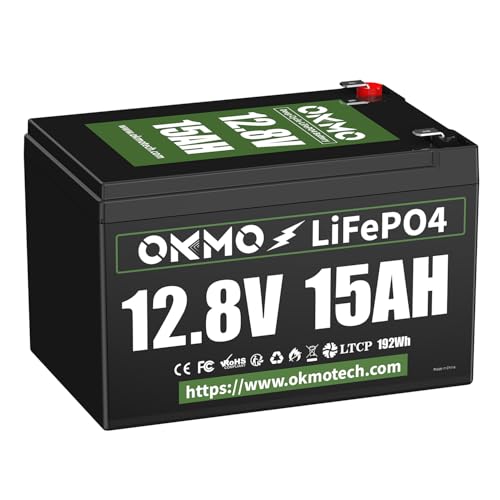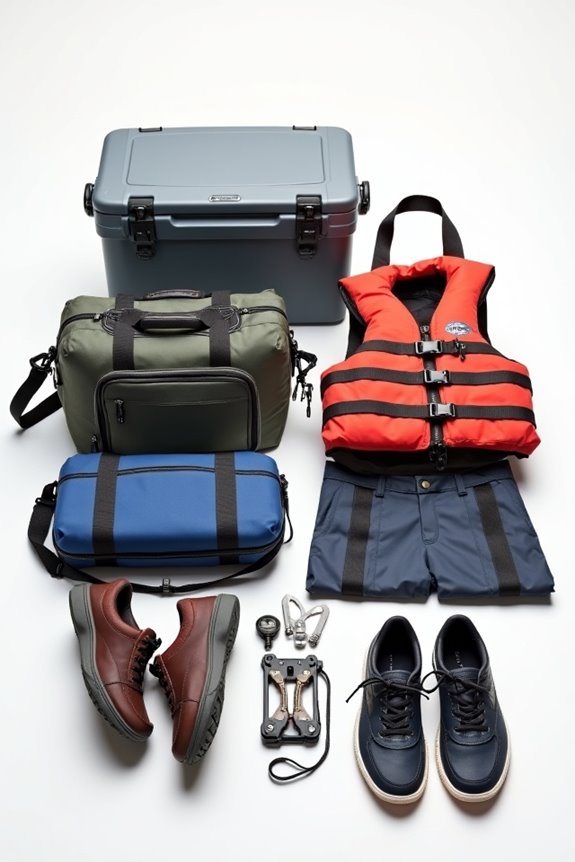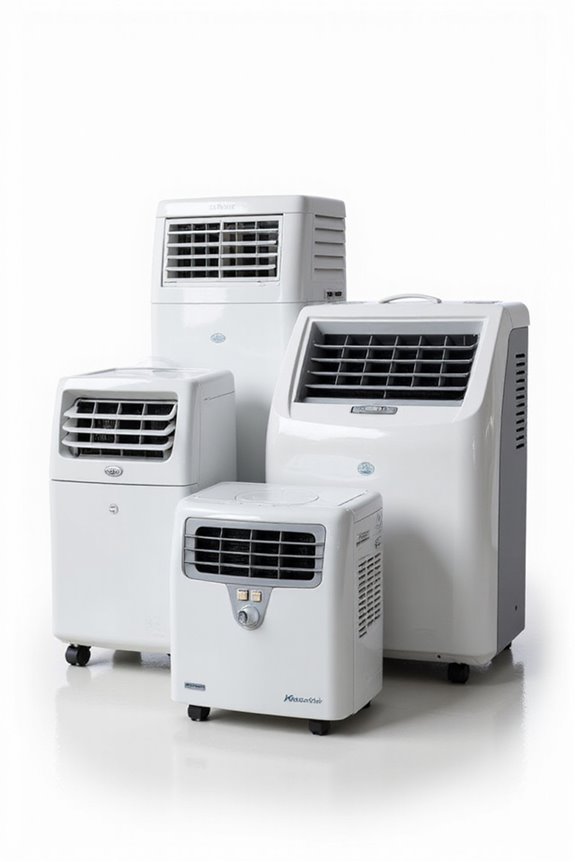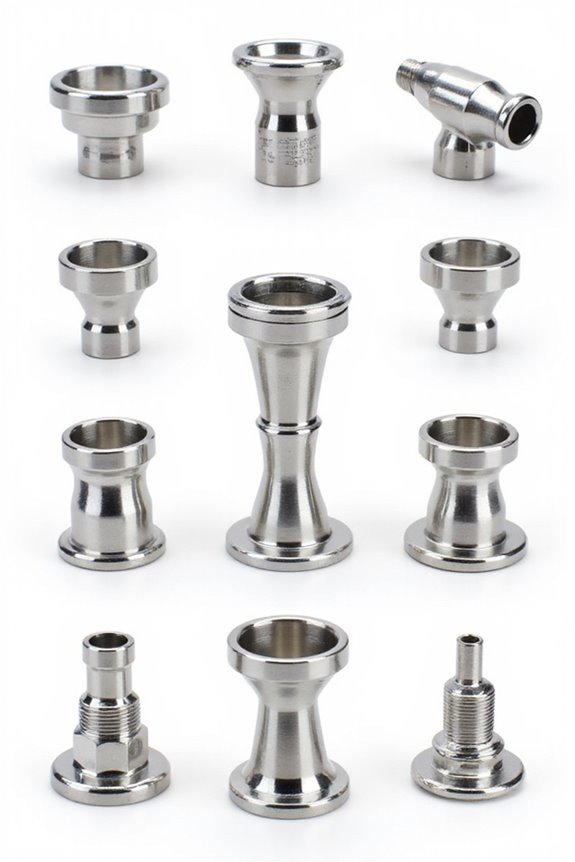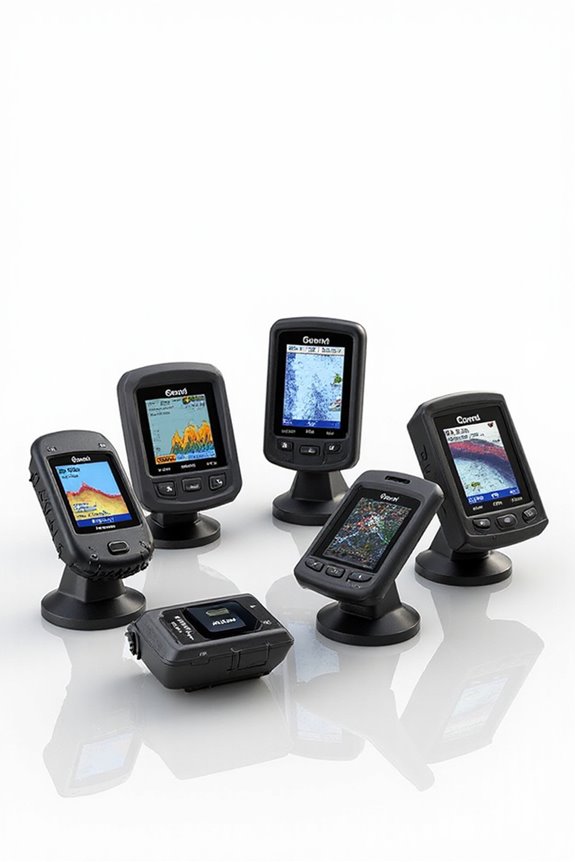As an Amazon Associate, we earn from qualifying purchases. Some links may be affiliate links at no extra cost to you. Although our opinions are based on curated research, we haven't used these products. Articles generated with AI.
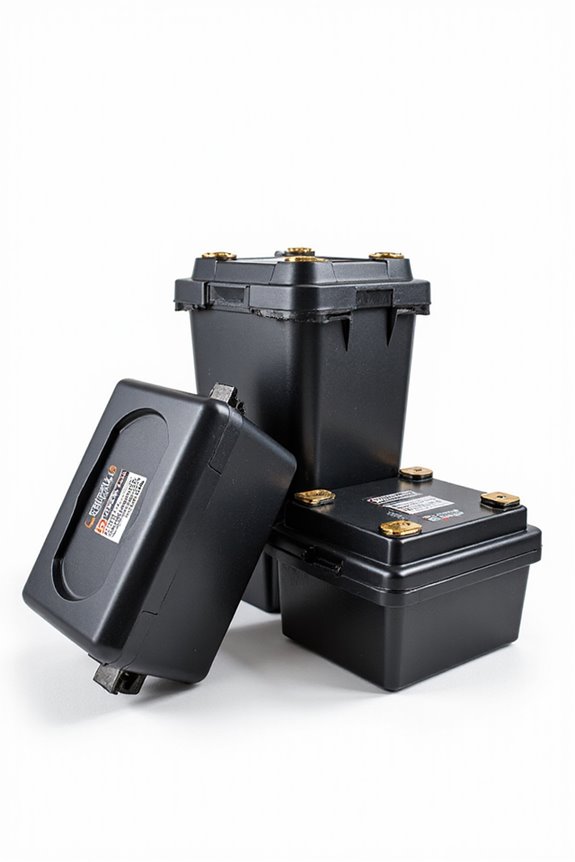
3 Best Fish Finder Battery Packs for Reliable and Long-Lasting Power
If you want reliable power for your fish finder, check out the 12V 20Ah Lithium LiFePO4 Deep Cycle Battery, the ECO-WORTHY Portable 12V Lithium Iron Phosphate Battery, and the OKMO 12V 15Ah LiFePO4 Battery. Each packs a punch with long-lasting performance, lightweight designs, and built-in safety features. Why lug around heavyweight batteries when you can have compact, powerful ones? Curious about which battery best meets your needs? Let’s explore what factors really matter to make the right choice!
Key Takeaways
- V 20Ah Lithium LiFePO4 Battery is lightweight, offers over 4,000 cycles, and features built-in safety protections, making it an excellent choice for fish finders.
- ECO-WORTHY 12V Lithium Iron Phosphate Battery spans over 10 years of lifespan, is compact, and has a robust Battery Management System for added safety.
- OKMO 12V 15Ah LiFePO4 Battery is superior in energy density, lightweight, and includes a Battery Management System, optimal for long fishing trips.
- Consider batteries with high cycle life (4000+ cycles) to minimize replacements and ensure sustained power for fish finder usage.
- Ensure compatibility with voltage requirements for fish finders to prevent damage and guarantee reliable performance during fishing expeditions.
12V 20Ah Lithium LiFePO4 Deep Cycle Battery
SEFEPODER 12V 20Ah Lithium LiFePO4 Deep Cycle Battery, 4000 Cycles Rechargeable Battery for Electric...
- 【Excellent Performance】: Sefepoder LiFePO4 batteries are made of high quality cells with high energy density, Long cycle life, Good safety performance, no memory...
- 【Safe and Reliable】: LiFepo4 batteries will not burn when overcharged, overdischarged, overcurrent or short-circuited, and can withstand high temperatures without...
- 【Long service life】: Lithium-ion batteries 4000+ cycles no problem, while traditional lead-acid batteries only 200-300 cycles, no memory effect, no matter what state...
If you’re on the hunt for a reliable power source for your fish finder, the V 20Ah Lithium LiFePO4 Deep Cycle Battery might just be your new best friend. This little gem boasts over 4,000 recharge cycles—goodbye, lead-acid batteries with their 200-300 cycles! It features a compact design, weighing just under four pounds, making it a breeze to handle. Plus, with built-in protections against overcharge and overheating, you’ll fish worry-free. Users rave about its long-lasting performance and quick installations. Just remember, you’ll need a LiFePO4 charger for peak results. So, are you ready to enhance your fishing adventures?
Best For: Outdoor enthusiasts looking for a lightweight and high-performance battery solution for their fishing equipment.
Pros:
- Lightweight and compact design makes it easy to transport.
- Over 4,000 recharge cycles provide exceptional longevity compared to lead-acid batteries.
- Built-in safety features protect against overcharge, overheating, and short circuits.
Cons:
- Requires a specific LiFePO4 charger, which may be an additional investment.
- Some users may need a compatible lithium battery monitor to ensure optimal charging.
- Dimensions need to be checked for compatibility with existing setups, as size variations may occur.
ECO-WORTHY Portable 12V Lithium Iron Phosphate Battery (20Ah)
Sale
ECO-WORTHY Portable 12V Lithium Battery, 12.8V 20Ah Lithium Iron Phosphate DEEP CYCLE BATTERY,...
- [Compact and Portable]The ECO-WORTHY 20Ah Marine Battery, measuring 8.70 x 4.45 x 4.61 inches, is perfect for small kayaks, traps and amateur radio equipment. Its...
- [DC Output Interface] Featuring traditional terminals and a 5.5*2.5mm DC port, this 12V battery supports standard charging and discharging, plus powering USB devices. For...
- [Versatile Use] Our 12v lithium battery serves as a reliable power source for outdoor camping, small UPS systems, kids' ride-on cars, power wheels, fish finders, kayaks,...
Looking for a lightweight and compact power solution for your outdoor adventures? The ECO-WORTHY Portable 12V Lithium Iron Phosphate Battery (20Ah) might just fit the bill! Weighing in at just 5.42 pounds, it’s perfect for your kayak or fishing trips. With a lifespan of over ten years and 5000+ deep cycles, you won’t be shopping for a replacement anytime soon. It features a built-in BMS that protects against overcharging and short circuits, keeping your gear safe. Just remember, while it powers your fish finder, match the battery capacity with your device’s needs. Don’t let low power ruin the fun!
Best For: Outdoor enthusiasts looking for a reliable and lightweight power source for camping, fishing, and small marine applications.
Pros:
- Compact and lightweight design, making it easy to transport and handle.
- Long lifespan with over 10 years and 5000+ deep cycles, reducing the need for frequent replacements.
- Built-in Battery Management System (BMS) provides multiple protections to keep devices safe.
Cons:
- Some users may experience runtime issues when powering specific devices, necessitating careful capacity matching.
- Limited DC output capacity (recommended 5A) may restrict usage for high-draw applications.
- The best performance may vary based on individual device compatibility and needs.
OKMO 12V 15Ah LiFePO4 Lithium Battery
OKMO 12V 15Ah LiFePO4 Lithium Battery 12.8V, 15000+ Deep Cycles rechargeable for Lighting, Kayak...
- 【Superior Performance】: The OKMO 12V 15Ah LiFePO4 battery is the perfect replacement for traditional lead-acid batteries, offering higher energy density, better...
- 【Extended Lifespan】: Offering over 4000 cycles and a 10-year lifespan, this battery supports 100% Depth of Discharge (DOD) and State of Charge (SOC), delivering...
- 【Advanced Protection & Low-Temperature Safety】: Equipped with a 15A Battery Management System (BMS), it provides overcharge, over-discharge, overcurrent, overheating,...
For avid anglers or outdoor enthusiasts, the OKMO 12V 15Ah LiFePO4 Lithium Battery might just be your secret weapon on the water or during camping trips. Weighing only 3.5 pounds, it’s a third the weight of traditional lead-acid batteries, making it easy to carry. With over 4,000 deep cycles and a decade of reliability, you won’t fret about running out of juice when you need it most. Plus, its Battery Management System keeps you safe from overcharging or overheating. Ready to power your fish finder or gadgets without the hassle? The OKMO battery might be your new best friend!
Best For: The OKMO 12V 15Ah LiFePO4 Lithium Battery is best for outdoor enthusiasts and anglers seeking a lightweight, reliable power source for their devices and gadgets.
Pros:
- Superior energy density and stability offering over 4,000 deep cycles.
- Lightweight design (3.5 lbs) makes it easy to transport compared to traditional lead-acid batteries.
- Safety features like a Battery Management System (BMS) and Low-Temperature Charging Protection ensure dependable performance.
Cons:
- Requires specific charging equipment compatible with lithium batteries.
- Higher initial cost compared to conventional lead-acid batteries.
- Limited to powering devices that do not exceed its 15Ah capacity.
Factors to Consider When Choosing a Fish Finder Battery Pack
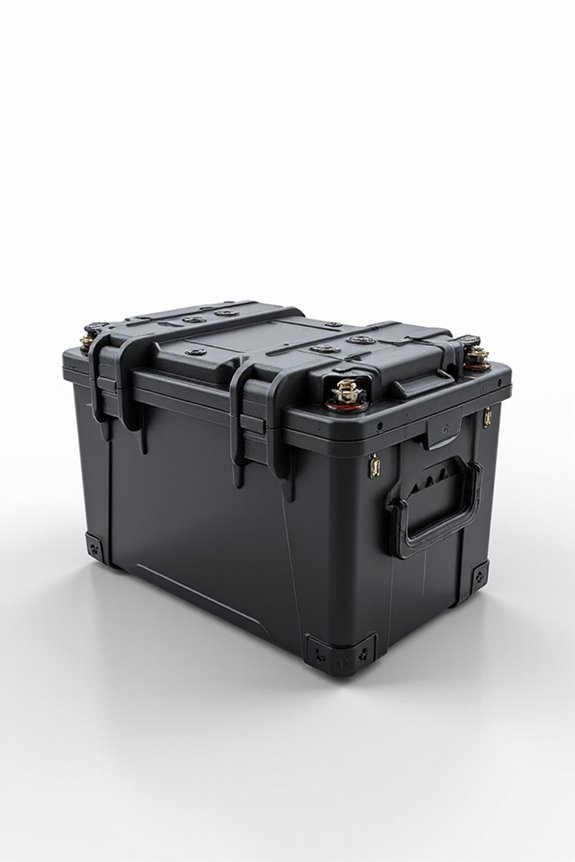
When you’re picking out a battery pack for your fish finder, there are some key factors to keep in mind. Have you thought about battery type, or what capacity and weight work best for your setup? If you want to avoid those awkward “my battery died” moments, consider charging time and how it performs in different temperatures, plus make sure it’s compatible with your fish finder.
Battery Type Selection
Choosing the right battery for your fish finder can feel a bit like picking a favorite ice cream flavor—so many options, but you want one that really satisfies your needs! Have you considered lithium LiFePO4 batteries? These beauties last over 4,000 cycles, way outperforming traditional lead-acid ones, which only offer about 200-300. Plus, look for batteries with a built-in Battery Management System (BMS) to protect against overcharging and short circuits—safety first, right? Also, since portability is key, pick a compact design that won’t weigh you down on your fishing trips. Don’t forget to check the discharge rate; picking a battery that supports up to 20A guarantees your fish finder runs smoothly without hiccups.
Capacity and Weight
You’re all set with the battery type, but there’s more to think about—capacity and weight are two major factors that can really affect your fishing experience. When choosing a fish finder battery, the capacity, measured in amp-hours (Ah), directly influences how long you can fish before needing a recharge. A 20Ah battery, for example, can keep you out there for extended periods. Weight matters too! Lighter lithium batteries, weighing around 4 pounds, are much easier to handle than heavier lead-acid options, which can be 15-20 pounds. Plus, don’t forget about matching the battery’s output to your fish finder’s needs—compatibility is key! Finally, consider how deep you can discharge it without damage. Happy fishing!
Charging Time Efficiency
While you’re probably already focused on capacity and weight for your fish finder battery, charging time efficiency is another crucial factor that can make or break your time on the water. Higher-capacity batteries tend to need longer charging times, so if you’re planning on a fast turnaround, look for those with rapid charging capabilities. Some lithium batteries can charge up to 10A, giving you a full charge in a fraction of the time that lead-acid batteries demand. Plus, a good Battery Management System (BMS) keeps everything running smoothly, preventing overcharging and optimizing efficiency. Remember to pick a charger suited for your battery type—using a LiFePO4 charger with lithium batteries can really speed things up. Who wouldn’t want more time fishing?
Operating Temperature Range
When you hit the water with your fish finder, you want to make sure your battery can handle whatever Mother Nature throws at it. The operating temperature range is key because extreme temps can affect your battery’s performance and lifespan. Most lithium batteries work well between -20°C to 60°C (-4°F to 140°F), but if yours isn’t rated for lower temperatures, you might find it struggling on those chilly fishing trips. High heat? That’s a no-go, too—overheating can lead to serious issues like thermal runaway. Always check the manufacturer’s specs for temperature compatibility, and consider a battery with a Battery Management System (BMS). This’ll keep you safe and keep the fish finder buzzing along, no matter the weather!
Application Compatibility
Ever wondered how to choose the right battery pack for your fish finder? First off, check the voltage requirements—most models run on 12V systems. You don’t want to fry your fish finder with the wrong voltage! Also, consider a battery with a high cycle life, around 4000+ cycles, to avoid those pesky replacements. Think about weight and size too; a lightweight, compact battery will make handling on the water much easier. It’s like carrying a snack instead of a full buffet! Don’t forget to look for a built-in Battery Management System (BMS) for safety, as it protects against overcharging and short circuits. Finally, deep cycle batteries are a must for sustained power during those long fishing trips!
Frequently Asked Questions
Can I Use a Car Battery for My Fish Finder?
You can technically use a car battery for your fish finder, but it might not be the best idea. Car batteries are made for starting engines, not powering delicate electronics. Plus, they’re heavy and cumbersome to carry around on your boat. Wouldn’t it be nicer to use a lighter, more portable marine battery designed specifically for this purpose? It just makes your fishing trip a lot smoother and more enjoyable!
How Long Does a Fish Finder Battery Last on a Full Charge?
Imagine your fish finder like a trusty compass on a great adventure—how long it guides you depends on its battery. Typically, a fully charged fish finder battery lasts anywhere from 5 to 10 hours, depending on the model and usage. If you’re blasting the brightness or using features like GPS, its lifespan might shorten. So, keep an eye on that battery gauge—no one wants to be left in the dark while fishing!
Are There Size Restrictions for Fish Finder Battery Packs?
When choosing a battery pack for your fish finder, size does matter! You need to verify it fits in your boat or wherever you’re placing it. Most manufacturers specify dimensions, so check those before you buy. Also, consider weight—nobody wants to haul around a heavy battery all day. So, keep it compact, but don’t skimp on power. After all, a good catch deserves a reliable battery, right? Happy fishing!
Can I Recharge My Fish Finder Battery While in Use?
Imagine your fish finder as a trusty fishing buddy, always ready to plunge into action. You can recharge your fish finder battery while it’s in use, but it’s not always recommended. A few systems may handle it, but be cautious; charging can generate heat, and that might mess with your device’s performance. It’s usually best to let it run on its own power, leaving the plugging in for when you’re back on land.
What Accessories Are Needed for Connecting a Fish Finder Battery?
To connect a fish finder battery, you’ll need a few essential accessories. First, grab some suitable gauge wires—thicker is better for power! You’ll also need connectors, like ring terminals, to attach to the battery. A fuse is a smart addition for safety’s sake, preventing any shocking surprises. Don’t forget a battery terminal cleaner; keeping those connections clean helps everything run smoothly. Trust me, you don’t want to play the “guess what’s wrong” game!

